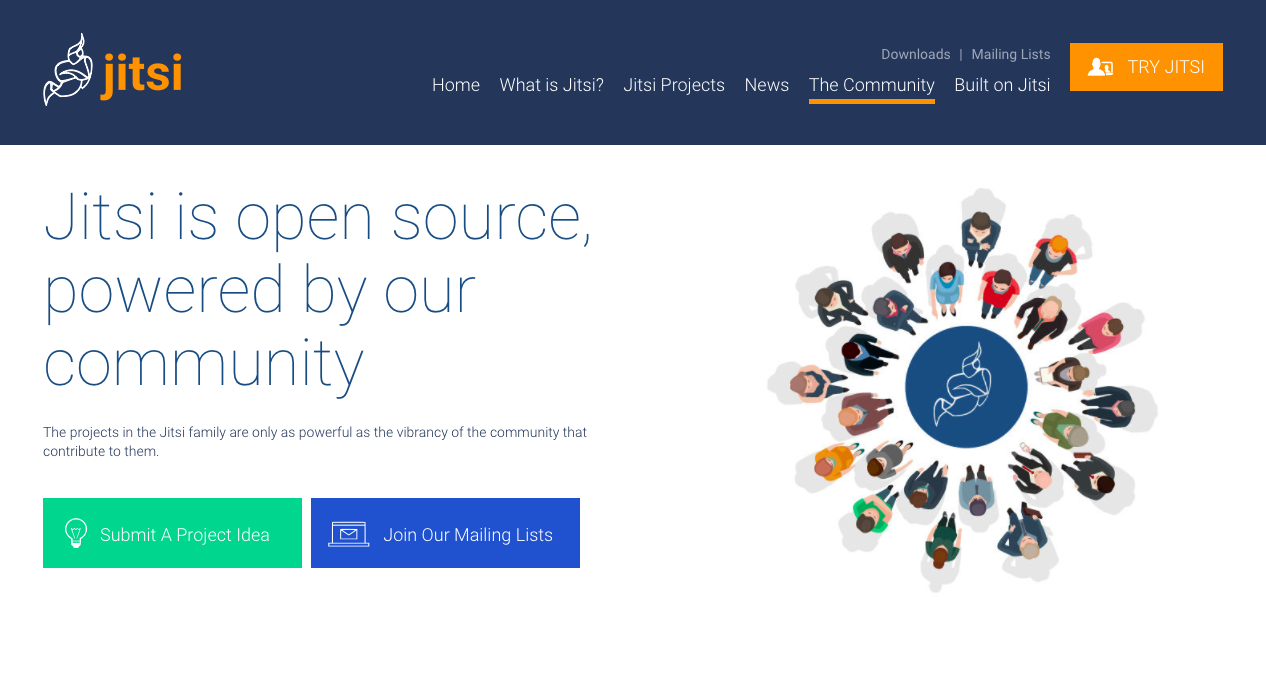
Jitsi, part of Atlassian, is a popular open source WebRTC application suite for multi-party video conferencing and a long time friend to callstats.io. In fact, since late 2015 callstats.io has come pre-integrated with the Jitsi installation package. The integration is a big enabler for teams all over the the world evident from the 100+ Jitsi based conferencing systems using callstats.io.
“For the Jitsi community, callstats.io has become this obvious choice” – says Emil Ivov, founder of Jitsi & Chief Video Architect of Atlassian
The best video-router with a strong open source community

Emil Ivov started Jitsi (meaning “wires” in his native language, Bulgarian) as an open source project in the University of Strasbourg in 2003. Acquired by Atlassian in 2015, Jitsi now powers high profile enterprise products, such as Stride and HipChat, HighFive, Symphony, as well as popular community projects such as Matrix.org and Rocket.Chat . The main reasons they use the Jitsi Videobridge and the projects surrounding it are: security, reliability, scalability and a lightweight implementation. Jitsi is especially well suited for large scale conferences - here at callstats.io we have noticed conferences with over 100 participants running smoothly on the Jitsi platform.
Jitsi has been around for a long time and as an open source project, Emil gives credit to its strong community: “Jitsi Videobridge is simply the most evolved, most advanced video-routing server that’s available to the public. We are an open source project, which makes it easy for our community to report bugs and suggest features, becoming a self-fulfilling prophecy of sorts”.
A dramatic reduction in time spent on debugging
Before callstats.io, Emil and his team evaluated some other services but did not find them advanced enough. Similarly, the Jitsi team attempted to build their own quality monitoring system but after a while decided against it and took up callstats.io because it was taking too much effort and that effort could instead be used to improve the core of their product.
“We use callstats.io because developing your own monitoring tools is just too difficult.” – says Emil
Initially, the Jitsi team spent most of their time on the callstats.io dashboard debugging individual conferences. Moreover, callstats.io’s notifications feature assisted the team at Atlassian to detect failures in real-time and fix bugs immediately.
“Whenever we released a new feature, with the help of callstats.io, we were able to dramatically reduce bugs and debugging time.“ – tells Emil
Moving from call debugging to monitoring at scale
Emil’s team is responsible for real-time video services at Atlassian, and currently they mainly use the callstats.io dashboard to grow the Jitsi service. Furthermore, the Jitsi team collects statistics from multiple sources, e.g Jitsi Videobridge and Jitsi Meet, and Emil credits callstats.io with consistently providing the most accurate metrics. As the product usage grows, they spend more time looking at various trends. This is essential because it helps the Jitsi team to quickly figure out the engagement, performance, and operational aspects of their products.
“callstats.io is consistently giving us the most reliable, accurate numbers, and helps make the most sense out of Jitsi’s call data” – tells Emil
Over the past few years, the team has taken a more managerial approach to quality monitoring. For example, while Emil recalls initially thinking the service-level dashboard seemed like an almost trivial feature for their investigative needs, he now estimates up to 90% of his callstats.io usage is on the general view dashboard.
When asked to choose a favourite feature in callstats.io, Emil points out how easy it is to rapidly redraw service level graphs by the click of a button, easily navigating from user feedback to duration metrics, to video quality metrics.
A tight community

For the Jitsi community, callstats.io has become “an obvious choice”, so much so that it is not even something people talk that much about, according to Emil: “When you are doing Jitsi in production, one day you will get around to monitoring and at that point the callstats.io integration is already there and ready for you to go. So it reduces friction and there is also no one else doing monitoring like callstats.io”.
For the past two years, callstats.io has been embedded in the Jitsi SDK, which makes it easy for teams with Jitsi deployments to start using callstats.io for monitoring. callstats.io is integrated in the Jitsi Meet and Jitsi Videobridge. For example, the French academic network RENATER’s WebRTC team praised the ease of setting up their Jitsi app and effortlessly enabling callstats.io to operate and manage their service.
Enabling callstats.io is as simple as creating an account with callstats.io, downloading the appropriate keys, and you are ready to go.


